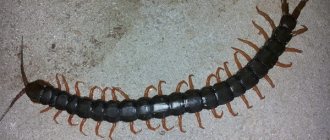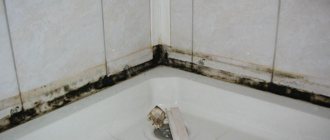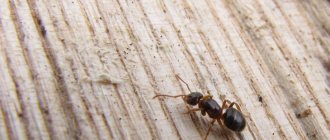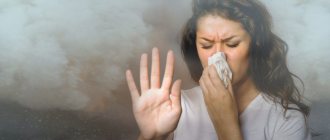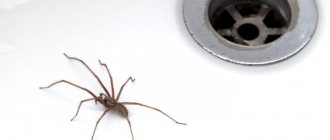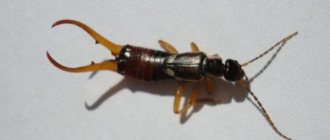Owners of their own homes know that their building is their fortress; it is cozy, comfortable and safe. However, not everyone is able to protect their home from various “invaders.” Unexpected visitors appear in premises against the wishes of the residents, and it can be extremely difficult to get rid of them. We are talking about a living threat that tirelessly searches for its “piece of paradise”, and often finds it. Mold in the basement of a private house is a problem that many owners have to face. These microorganisms appear unnoticed, but after the formation of a large colony, it becomes almost impossible to remove them. To free yourself from the “scourge”, you need to learn effective ways to fight the fungus, and then begin to act - purposefully and ruthlessly.
Harm and types of mold
Mold often appears in our homes, which can be of several types:
- White mold usually appears in flower pots as a reaction to excessive moisture or the use of certain fertilizers. Human exposure may manifest as an allergy;
- green mold can appear on food: eating contaminated food risks causing serious illness. Green mold also occasionally affects building materials, such as brick;
- black mold is enemy number 1. This is the most common type of mold and can affect any surface: wallpaper, paint, plaster, boards, concrete, etc. If left untreated, it can subsequently cause insomnia, dizziness, fever, headaches, and in the worst case, asthma, bronchitis, dermatitis, pneumonia and even lung cancer;
often appears on wooden surfaces in the house: parquet, frames, furniture, etc. They begin to acquire an unpleasant dull blue tint, the paint layer is destroyed, and even the paint coating cannot save it;
blue mold- Rotting mold is another enemy of wood. Depending on certain features, the tree may acquire a gray or brown tint, become lighter, cracks appear on it, etc.
None of the finishing materials known to us can resist mold. But in addition to harming repairs, it is also toxic to the human body , especially children. Depending on the level of mold spread in the apartment, the symptoms may be different: first there is an impact on the respiratory system, and then on the entire body as a whole. Evidence of the negative impact of the fungus is the appearance of a cough, runny nose, lack of air, difficult to diagnose chronic diseases - all this is the reason for being in a damp room contaminated with mold.
Mold can also cause nausea, vomiting, headaches, and fatigue. In addition to the fact that it looks unaesthetic, it also has a destructive effect on building materials: it penetrates the structure, quickly spreads and occupies more and more areas. That is why, after detecting even hints of mold, it must be eliminated immediately.
Grapefruit seed extract
Using this method is similar to using tea tree oil. To purchase this product you will have to spend quite a lot of money. The extract does not have any odor. It has good disinfectant properties.
It is quite easy to prepare the solution, since only 10 drops of this substance are required for one glass of clean water. It is advisable to apply the resulting mold and mildew remedy to the walls using a sprayer. After completing this work, there is no need to wash off the extract from the surface. This method is effective, and the product used protects the room from the appearance of fungal spores in the future.
Causes and signs of mold
To get rid of mold once and for all, it is enough to clearly determine the cause of its appearance in your apartment and eliminate it. The fact is that fungal spores are present in any room, but the basis for their development is favorable conditions, which become the reasons for the appearance of moldy spots in different parts of your home :
high humidity combined with poor ventilation, which often happens in the kitchen or bathroom, in apartments on the first floors, houses where humidification is abused, etc.;- freezing of walls;
- ground dampness;
- leaking water pipes;
- roof leaks;
- poorly heated room.
Everyone has probably already encountered the phenomenon of mold and can easily recognize it: it is the appearance of an unpleasant damp smell, spots of black, gray or white. To get rid of mold forever, you need to apply a set of measures, and in addition to the means described below aimed at combating already existing fungus, be sure to eliminate the cause of its appearance.
In general, all work to combat mold in the house comes down to the following list of measures:
- clean the affected surface from mold;
- treat the surface with a mold repellent;
- Throw away all items severely damaged by fungus;
- create normal conditions in the room: good ventilation, normal heating, eliminate all sources of high humidity.
At the moment, a lot of anti-mold remedies have been invented, each of them is applicable in certain conditions and differs in some features.
Where is fungus most often found?
Fungus in apartments and houses develops more often in spring and autumn, especially during periods of low outside temperatures when the heating is turned off. In uninsulated garages, sheds, and basements, the “flowering” season is replaced by the winter season.
The fungus appears in private houses, on the first floors of multi-storey buildings, especially with poor-quality waterproofing of the base. Leaking roofs and cracks in walls often cause increased moisture.
Inside there are corner rooms, bathroom, toilet, balcony and kitchen which are more prone to fungal growth. Frozen walls of slabs made of porous material, areas behind furniture, under wallpaper, on pipes, in a washing machine, on a water filter are possible locations for spore colonies.
Ways to get rid of mold
You can fight mold both with special means, which are sold in a sufficient assortment on store shelves, and with folk methods. The latter will be less harmful to the person himself, will cost less, and are not always inferior in effectiveness to their professional counterparts.
Method number 1. Antiseptic primer
This is the most proven method that will definitely help in the fight against fungus. In construction stores, such products are presented in a wide range: Fongifluid Alpa, Dali, Olymp Stop-mold, Biotol-spray, etc. Applying them to an infected surface not only helps get rid of the fungus, but also prevents its occurrence in the future.
Working with such a solution is very simple: it is either sold ready-made or requires the addition of a clearly defined amount of water, as indicated in the instructions. Next, you just need to apply the resulting composition to the required surface, and you’re done.
Important: you need to apply an antiseptic primer only to a well-cleaned surface, so all material affected by the fungus must be carefully removed, and if it has become deeply ingrained, then you will need to clean all layers down to the brick or concrete slab. Then the primer is evenly applied with a regular paint brush onto a dry surface. When the protective layer has dried, you can begin finishing: gluing wallpaper, painting walls, plastering, etc.
Method number 2. Bleach
Bleach is an easier way to get rid of mold in the house, a worthy replacement for professional products. Regular bleach contains sodium hypochlorite (it is also present in many special products as an active ingredient), which has a detrimental effect on mold and its spores, so it is a reliable way to get rid of almost all types of mold. But you can’t use bleach on all surfaces, as they can fade, deteriorate, etc. Bleach is great for glass, tiles, bathtubs, and other non-porous materials, but it won't work on drywall, wood, etc. The fact is that the active substance, chlorine, in this case does not penetrate into the material where the mold particles are located, but acts only on the surface. And the water that is part of such a solution is absorbed by porous materials, leading to even greater mold development.
Working with bleach can hardly be called safe, as it can corrode the skin of your hands and cause poisoning with toxic fumes. Therefore, it can only be used in a well-ventilated area and wearing rubber protective gloves. The solution is prepared from bleach and water in a ratio of 1:10, applied with a brush and wait until completely dry. As in the previous case, the previously damaged surface must be cleaned.
Method No. 3. Vinegar
Regular vinegar, which everyone has in their kitchen, is a weak acid that is poisonous to many types of mold. Its advantage is that it does not emit any dangerous fumes, so it is completely safe to use.
Vinegar is sprayed onto the prepared surface, and then wiped with a dampened rag; after an hour, the surface is washed with water and the room is well ventilated. In particularly damaged areas, it is better to carry out this procedure several times at intervals of one week.
Method number 4. Hydrogen peroxide
Hydrogen peroxide is another poison for most types of mold. You can buy a 3% peroxide solution at any pharmacy; its smell is not so harmful to humans, so working with it is more or less convenient. It should be applied to a prepared surface cleaned of mold, but since peroxide also has a bleaching effect, it is better not to apply it to painted surfaces, but to choose a different method.
Method No. 5. Ammonia
Ammonia works similarly to bleach: it works great on mold on hard, non-porous surfaces, but is not very effective on porous materials. It does its job perfectly when mold has formed, for example, on tiles or glass.
Ammonia must be mixed with water in a 1:1 ratio and sprayed onto the contaminated surface, and after an hour, rinse the solution with water and ventilate the room well. You need to work with ammonia very carefully, as its pungent odor can cause dizziness, headaches, etc. Be careful not to try to use it in combination with bleach, as the reaction between the two will release toxic gases.
Method number 6. Baking soda
Baking soda is one of the easiest and safest ways to get rid of mold, and it does not harm either humans or pets. It is enough to prepare a solution of soda - dissolve a teaspoon in a glass of water - and spray the surface affected by mold with the resulting mixture. You can also wipe moldy things, walls, objects with a sponge soaked in this solution. After an hour, the surface needs to be washed with water, but it is not recommended to completely wash off the soda solution from it: soda is not capable of harming the material, but it perfectly protects against the recurrence of fungus.
Method No. 7. Borax
Borax is a natural material, so it cannot harm human health. It is often used to disinfect toilets and drains, acts as an effective fungicide, insecticide and herbicide, in general, it is an inhibitor of mold growth and a toxin for it.
It is recommended that before starting mold cleaning work, first vacuum the surface with a fine filter, so that during the process as few pores as possible fly in the air and enter the respiratory system. The working solution is prepared as follows: 1 glass of borax is diluted in 2.5 liters of water. The borax solution is applied to the surface with a stiff brush, while simultaneously removing the fungus itself from walls, objects, floors, etc. It is advisable to walk over the surface with such a solution several times; there is no need to wash off anything, since in the future the borax will become a reliable protector against mold.
Method No. 8. Tea tree oil
Tea tree oil is one of the most effective natural remedies that are absolutely harmless to humans. Although this oil is not cheap, you will need very little of it; it has strong antibacterial and antifungal agents.
For one glass of water you will need a teaspoon of tea tree oil. This mixture is added to a spray bottle and applied to the damaged surface, or used to apply it to a sponge; there is no need to wash it off, since this solution will reliably protect against the possible reappearance of fungus.
Tea tree has its own specific smell, but it is harmless and will disappear after a while. By the way, the prepared solution for combating mold can be stored for as long as desired, since it does not lose its strength over time and does not deteriorate.
Method number 9. Grapefruit Seed Extract
This product is similar in action to tea tree oil; it is also expensive, but it is odorless and has a disinfectant and deodorizing effect.
The solution is very simple to prepare: one glass of water requires only 10 drops of grapefruit seed extract. Again, we use a sprayer for application, and after application we do not wash off the solution, since the longer its contact with the damaged surface, the better, and in the future this solution will protect walls and floors from the appearance of new mold stains.
Method No. 10. Potassium permanganate solution
Ordinary potassium permanganate also has a detrimental effect on mold. The damaged surface can be treated with a weak solution of potassium permanganate: add a teaspoon of potassium permanganate to 1 liter of water, and spray or wipe the damaged areas with the resulting composition. The solution does not need to be washed off; it will be effective for some time.
Method No. 11. Lavender and Rosemary Fragrance Oil
These oils contain substances that can counteract the development and activity of mold, so just add a few drops of aromatic oil to a glass of water and then treat the surface: there will be no unpleasant odor of chemicals, these oils are non-toxic for humans, and they perfectly kill most types of mold .
Method No. 12. Stationery glue
Many craftsmen get rid of mold using office glue, which is diluted one to one with water. The method is effective in some cases, but it does not cope with all types of mold, and if the affected area is not very large.
Method No. 13. Iodine solution and camphor balls
An iodine solution and camphor balls will only help if you have just discovered small traces of mold, and you don’t want to use more aggressive means of control yet. Therefore, in an infected room, you can place containers with iodine solution or place camphor balls.
Method No. 14. Lemon acid
To combat fungus, use citric acid or lemon juice, which have the same properties as vinegar - it is a weak organic acid that negatively affects the development of fungus. A teaspoon of citric acid is dissolved in a glass of water, and the surface is treated with the resulting solution. This method is great for tiles.
Method No. 15. Hydrogen peroxide+vinegar+boric acid
All these components are able to cope with mold at the highest level, and together they give an absolutely amazing effect. Water must be mixed with peroxide, vinegar and boric acid in a ratio of 4:2:2:1, and then sprayed or wiped onto the surface.
Method No. 16. Let's get rid of it for sure
Even if you have dealt with the mold that has formed in accordance with all the instructions, there is still no guarantee that it will not appear again. It is important not only to remove the fungus that has already appeared, but also to eliminate all possible reasons for its reappearance. This is why you need:
- reliably insulate an apartment or house;
- repair or replace the heating system;
- install an air conditioner to dry the air;
- adjust the ventilation system;
- dry clothes not in the room, but on the balcony, or purchase a washing machine with a drying function;
- use a hood when preparing food;
- ventilate all rooms well;
- eliminate leaks in the roof, taps, etc.;
- geraniums and violets are an excellent place for mold to grow, so their presence in the apartment should be limited;
- The most risky places from the point of view of the appearance of mold should be regularly wiped and sprayed with anti-fungal agents.
Prevention measures
To prevent the formation and spread of mold, you need to take preventive measures:
- dry clothes on the balcony, not in the room. If this is not possible, you should choose the most spacious room, ensuring good ventilation.
- When cooking, you should always use a hood to prevent rising steam from settling on the walls and ceiling;
- slopes of plastic windows can be treated with water-repellent spray;
- The bathroom must be cleaned very carefully. It is important to put the ventilation system in order; this will immediately solve the problem of high humidity. After taking a bath or shower, the plumbing fixtures should be wiped with a clean cloth, which should be dried each time.
- Clean the bathroom at least once a week using disinfectants;
- promptly repair faulty equipment and leaking pipes.
- Also, do not place furniture close to the walls. There should be a gap of several centimeters between the surfaces for normal air circulation.
How to remove mold smell?
Often, after removing mold from an apartment and subsequent ventilation, the smell of rot still does not leave the room. You can fight it with products that absorb odors. So, you can pour baking soda on the place where the fungus used to be, and after a few hours remove it with a vacuum cleaner: soda perfectly absorbs odors, so after this procedure the smell will either disappear or become much weaker.
You can use charcoal as an odor absorber: briquettes are simply placed around a room with an unpleasant odor, and after a while not a trace of it will remain.
Using Home Remedies
It is allowed to use not only specialized chemical compounds, but even home remedies that allow you to destroy mold. How to remove fungus on the walls in an apartment? To do this, you can use the following available tools:
- hydrogen peroxide;
- vinegar;
- ammonia;
- copper sulfate;
- bleach;
- soda;
- tea tree oil.
In practice, it often turns out that the use of these products does not give the desired result, so even if it is possible to get rid of mold, it is only for a short period of time. Therefore, if there is serious damage to the walls, you need to use professional compounds.
Some more tips for dealing with mold
Mold in each room has its own characteristics, so the approaches to combating it should be slightly different.
Removing mold from walls
At the first sign of mold, you need to act immediately, since within 10-12 months it can reach concrete or brickwork. Therefore, you should remove the damaged layer of finishing, wet the wall a little so that mold spores do not scatter throughout the room, and remove the layer of plaster, then thoroughly clean off all the plaque and thoroughly sweep the room, dry the walls and treat with the selected anti-mold preparation.
If the walls are painted, then the mold spreads more over the area than inside, and after removing the paint and varnish coating, you can begin the neutralization process, moving from simpler to the most powerful means.
Plasterboard ceilings and walls differ in their structure: they are porous, so you need to take into account that mold can develop deep into the material. In this case, professional products are suitable.
In rooms on wallpaper, fungus spreads at lightning speed, so in most cases you will have to remove the wallpaper. This can only be avoided in the initial stages of mold development.
In this case, a solution of vinegar, ammonia, special compounds, lavender oil, a solution of potassium permanganate or a solution of hydrogen peroxide are ideal for fighting fungus. But still, it is unlikely that you will have to avoid dismantling at least part of the wallpaper, since all of the listed means can slightly change its color, and the likelihood that mold is already firmly entrenched in the apartment and is developing under the wallpaper is high.
Removing mold from the bathtub
In the bathroom, the most vulnerable places are the joints between the plumbing and the wall, treated with sealant, as well as the seams between the tiles. A black coating very quickly appears there, which is not washed off - mold.
In this method you need to follow the old scheme: remove the affected area, i.e. moldy sealant, treat it with the selected product, and reapply the sealant. The seams between the tiles are cleaned with a metal scraper, and then grout with antiseptic properties is used there.
If mold appears on the ceiling, then moisten the area a little with water and leave for 2-3 hours, then remove the whitewash and plaster, and putty all the resulting unevenness. Next, we use a primer that contains antifungal agents, and after it dries, we apply a penetrating primer. All that remains is to sand the surface, and the ceiling is ready for further finishing.
You can also get by by applying a solution of bleach, soda, vinegar or tea tree to the affected area of the bathroom ceiling.
If you liked the article, please share it
Previously on the topic:
Share
Cleaning contaminated walls
Without destroying the wall finishing, the fungus can be removed at the initial stage of its development, when there are less than 10 scattered spots up to 1 cm in size on the surface. These are individual spores that have sprouted. The roots did not pierce the plaster with their roots, and did not unite into a mycelium. Any store-bought antifungal agent for walls, a solution of chlorine, vinegar and soda, is suitable for treatment.
At the initial stage of damage, mold is rarely detected. Usually there are many spots, they are larger than 2 cm and are located in a whole colony. The roots have penetrated the entire mass of plaster and it must be removed, taking safety measures.
- Wear goggles, a respirator, and rubber gloves.
- Clothes must have long sleeves. Fungal spores are small and can penetrate the skin, causing itching and irritation.
- If the walls are covered with wallpaper, remove them.
- Before removing the plaster, wet the wall. There will be less dust when removing the putty. It’s good to spray it with bleach diluted in half with water a day before and a solution of 9% vinegar. The growth of mushrooms will slow down, some will die, and the spores will be several times smaller.
- The wall is stripped down to masonry or clean concrete. Remove the remaining solution with a wire brush.
If the mycelium has not grown all the way through, there is no need to clean it further. This happens if several small areas of mold stains have not united into one, the fungus has settled relatively recently.
After treatment with fungicides, the wall is plastered and puttied. It is necessary to use materials with antifungal agents. They are more expensive than conventional building mixtures, but will not allow the fungus to settle again. Sold ready-made, packaged in plastic buckets. If the cleaning was not deep, you can get by with a deep penetration antibacterial primer. This product must be added when finishing wooden walls.
Each layer of plaster and putty must dry before the next one is applied. Before wallpapering and painting, you need to cover the entire area with an antifungal primer, repeat it a day later, and only after complete drying - after 36 hours, you can apply paint and glue the wallpaper.
We use borax to eliminate
- fast and safe;
- no final cleaning of the wall is required.
What do we have to do
- dissolve 100 grams of borax in 1 liter of water;
- soak a brush in the solution and clean the wall;
- Dry the entire surface thoroughly.
If your knowledge of chemistry is limited to a school course and this was not true a long time ago, then here is some brief background information: borax
is the sodium salt of boric acid; it is part of many detergents. It is also found on sale in the form of small crystals, which seems very convenient for use.
The tile was damaged
The most difficult part to deal with is mold on tiled walls. I don't want to dismantle the tiles. It is necessary to treat the seams using strong agents.
- Clean all blackened seams between tiles.
- Soak the solution remaining in the depths with strong commercial products or pure Whiteness.
- Repeat every other day 3 – 5 times. The larger the affected area, the longer it is necessary to use antifungal agents to treat the walls.
- When the blackness disappears from the seams, they need to be dried. Then, after treating with an antifungal primer for walls, sand the seams.
After rubbing the seams, you need to wash the tiles by adding vinegar or essential oils to the water. In the future, wash it once a month with laundry soap or rub it with yourself and spray the vinegar solution. Soap and grease stains will be washed away along with bacteria.
The bathrooms do not have windows. It is necessary to install forced ventilation in them, open the door at night so that the room is better ventilated.
In the kitchen, the hood cannot cope with the large amount of steam released during cooking and the operation of kitchen equipment. It is necessary to install hoods with fans and open windows for ventilation every day.
